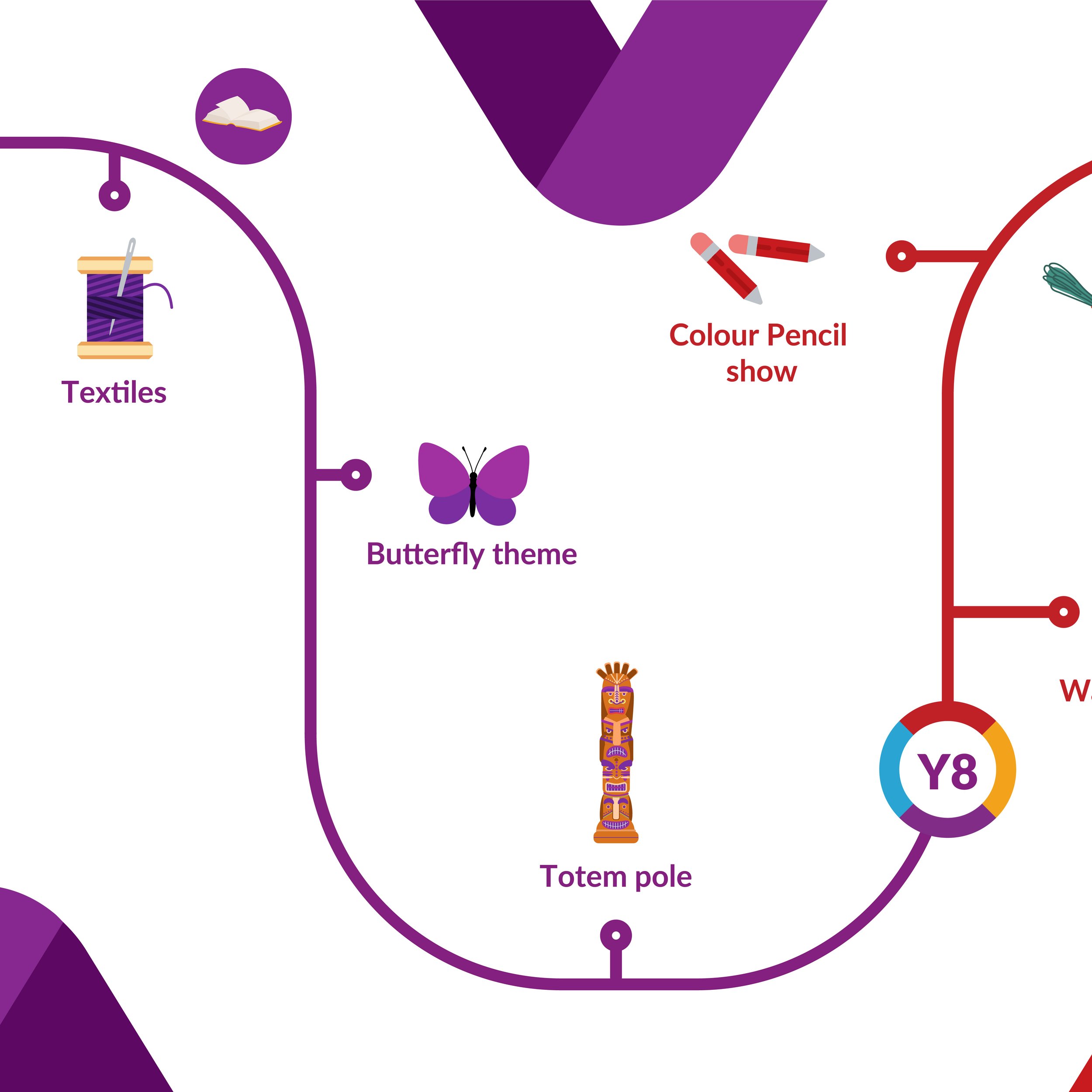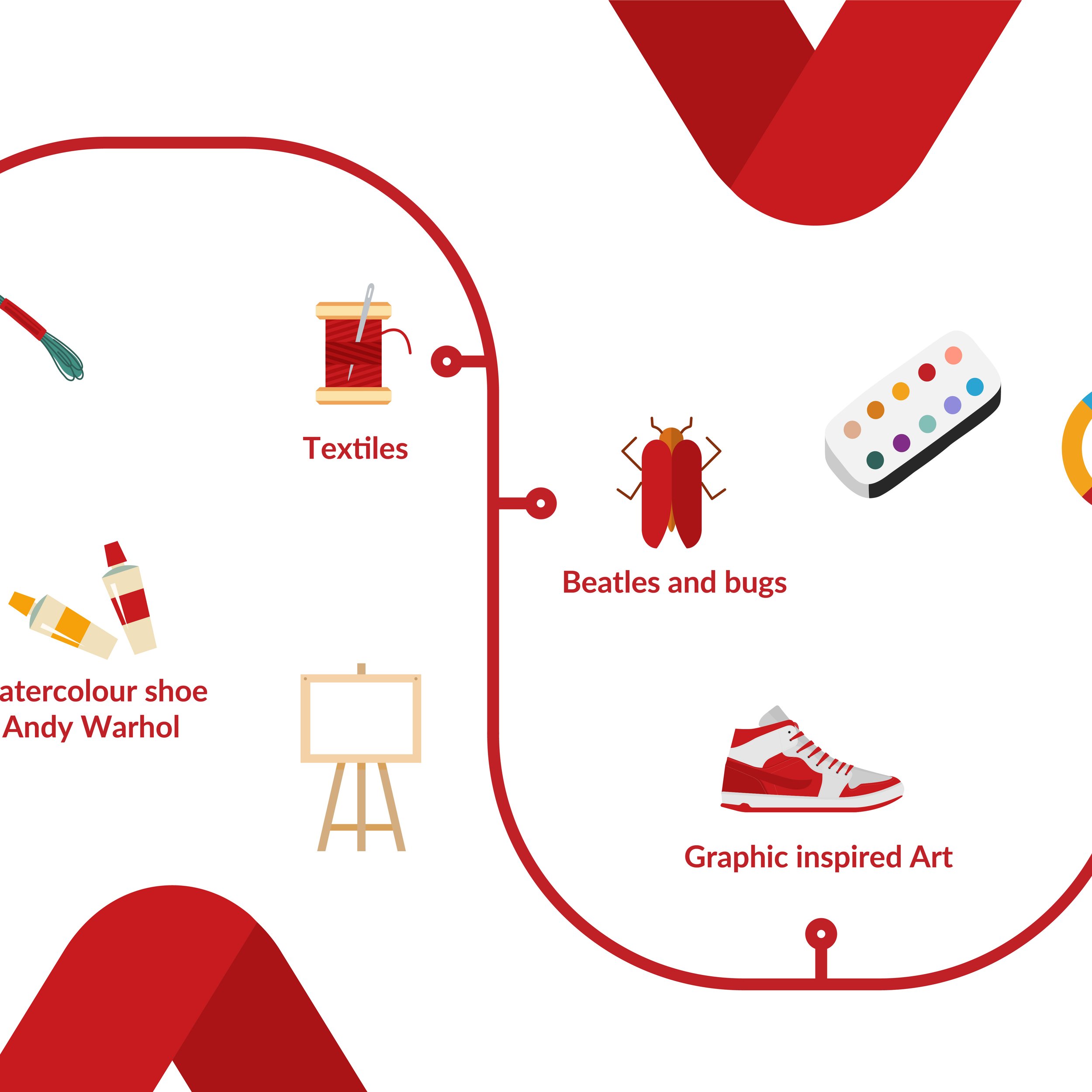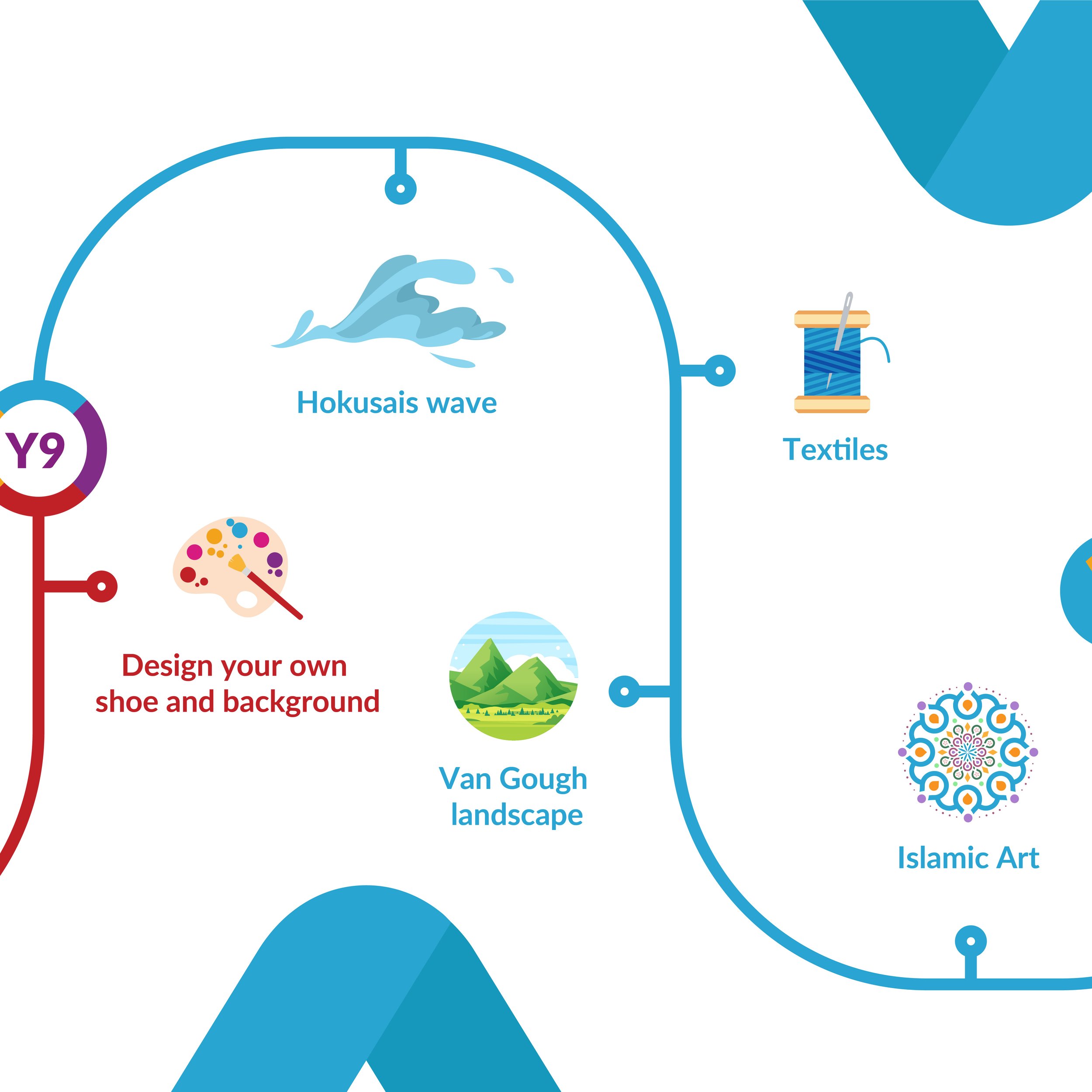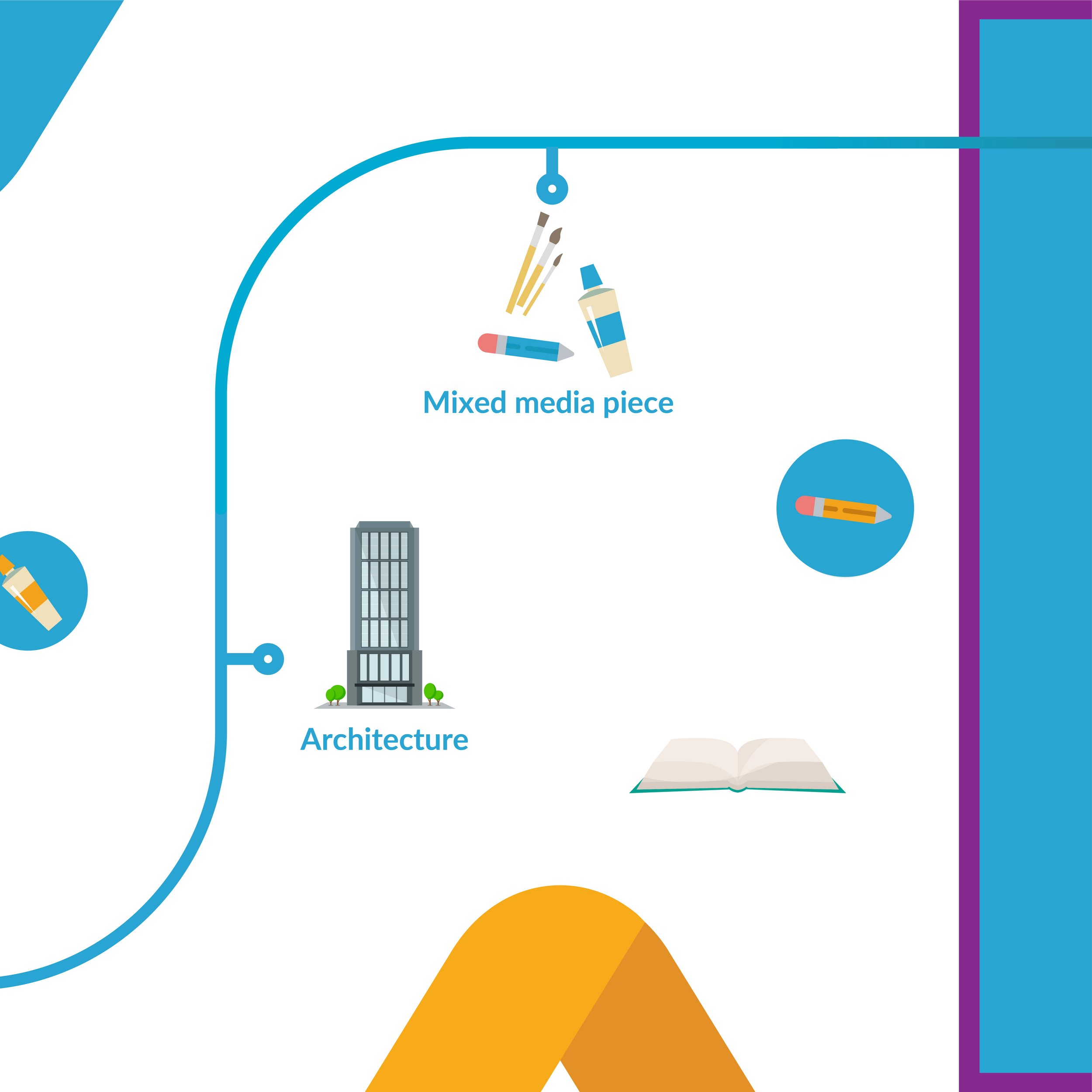
Art and Design
Year 7
Project 1
Coat Hook
-
This project will introduce students to product design and the workshop environment. Students will design and make an animal-themed wooden coat hook, working independently with a range of tools, machines and materials. Students will investigate a range of materials and manufacturing processes.
-
Boards, Timbers, Natural, Man-made, Hardwoods, Softwoods, Design brief, Risk assessment, Scroll saw, Belt sander
-
Ask your child if they know the properties and differences between natural woods and man-made boards.
Ask your child If they know the difference between a design brief and a design specification, and what each one contains.
Ask youur child if they know the key health and safety rules in the workshop.
-
Project 2
Monster Phone Case
-
Students will research different types of textiles and sewing techniques, using them to create a monster-themed phone holder. They will be given a design brief and will need to design a product that fits this brief. Students will practice a range of embroidery stitches and applique techniques.
-
Natural, Synthetic, Embroidery, Applique, Design brief, Woven, Non-woven, Running stitch, Back stitch, Cross stitch, Knotted stitch
-
Ask your child to name a few examples of natural and synthetic fabrics and fibres.
Ask your child to name 3 key points a design specification must cover.
Show your child some textiles items, and ask them to identify the material it is made from.
Ask your child to name 3 types of embroidery stitch.
-
Project 3
Headphone Tidy
-
Students will be introduced to CAD/CAM processes and will use them to design and make plastic headphones tidy. Different types of plastics and their properties will be investigated. Students will develop their computer skills through CAD/CAM, and gain experience in the workshop working with plastics by making a plastic twisty fish keyring.
-
CAD, CAM, Thermoforming, Thermosetting, Acrylic, Laser cutter, Heat press, Vacuum forming, Injection moulding
-
Ask your child what CAD and CAM stand for, and an example of each.
Ask your child what thermosetting and thermoforming plastics are, and the properties of each.
Ask your child to name 3 plastic forming processes.
-
Project 4
Jellybean Packaging
-
Students will design and make packaging for their own brand of jellybeans. They will analyse existing sweet packaging and research printing and manufacturing processes. They will work to a design specification and evaluate their finished product.
-
Offset lithography, Die cutting, Design brief, Market research, ACCESS FM
-
Ask them what each letter in ACCESS FM stands for, and why it is important to the design process.
Ask your child to describe why market research is important when designing a product.
Ask your child to give three different examples of how market research can be carried out.
-
Project 5
Food
-
Students will prepare and cook a range of dishes, independently following recipes including fruit salad, flapjacks and chicken kebabs. They will develop their skills in using knives, ovens and other kitchen equipment, as well as learn to work in a busy kitchen environment.
-
Bridge, Claw, Enzymic browning, Glazing, Rubbing in, Whisking, Food safety, Cross contamination
-
Ask your child to support you in the kitchen.
Re-cook any recipes you have already cooked at school and try to improve or modify them.
-





